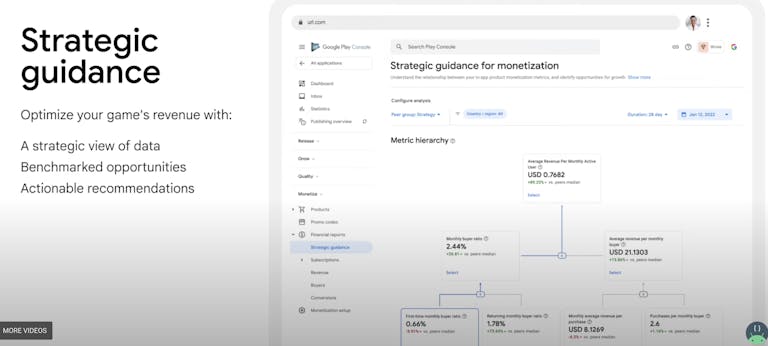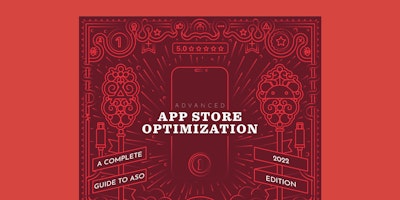
Google I/O Announcements 2023: Recap
Similar to WWDC for iOS, Google I/O is a major moment in the ASO year, as Google shares new features about to be released for Android and the Play Store. Following the 2023 announcements, here is a recap of the main announcements from the keynote address as well as AppTweak’s comments and callouts.
More store listings improvements to drive growth
Announcements around custom store listings (CSLs) were likely among the most anticipated, and it is now official that CSLs will receive two new targeting options:
- Custom store listings by user status will soon offer the possibility to target inactive users specifically.
- Developers will also be able to start using custom store listings for Google Ads. Important to note, however, is that this targeting option will only be available for YouTube and AdMob inventories, as you will need to link a CSL with a specific campaign ad group ID. This means, in particular, that no custom store listings would appear in Google Play search results or in the Apps or Games tab, even though some Google ads may appear there.

An additional feature for CSLs is store listing groups, which can be created already and allow developers to edit CSLs in bulk and easily create new CSLs based off existing ones.

AI tools to improve text metadata
Two other announcements from Google were regarding new AI-powered features for the Google Play Developer Console, specifically:
1. A free, improved translation tool powered by Google’s language models.
- Though the feature may not sound particularly impressive, it will be interesting to see how much it improves translations in the eyes of native speakers. We expect it will help developers save a lot of time on translations, but they should still have a native speaker review results whenever possible.
- Additionally, we’ll monitor how it performs in terms of keyword optimization quality, particularly considering Google’s models are most likely trained on a wide corpus of text and are not necessarily aware of particular store semantics (such as “run” and “running” being used for very different apps despite the two words being extremely close semantically in the real world).
- Last but not least, regarding this translation tool, Google shared that it will cover 10 languages (only) at launch, but we can expect more will be added in future months and years.
2. An AI helper is the second tool unveiled. It will help developers generate long descriptions based on a one sentence prompt. This tool will likely be extremely scrutinized in the ASO Community.
We are curious to test it; however, we noticed that the prompt used in the video demo by Google seemed to be pre-formatted. This would not have allowed developers to write their prompt entirely (unlike what you may try with ChatGPT).
Learn how to optimize your ASO strategy with these ChatGPT prompts
Promotional content to grow user discovery
Although Google made some interesting announcements around promotional content, the one thing that was sadly not announced was the official launch date for the overall feature, which is currently still in beta. Hopefully, this will soon be addressed, especially given how developers who were not already allowed in are not able to request beta access anymore, even though Google is now announcing the use of promotional content is becoming a criteria to get an app or game featured in the Play Store.
Regarding the actual announcements, these include:
1. Promotional content will be featured in the Games/Apps tab of the Play Store, as well as appear in search results and even be the subject of Play Store notifications.
2. Google also teased an enhanced version of promotional content reports, which will leverage AI to report on the lift that a given promotional content created on engagement and monetisation metrics.
Although the feature is a great idea on paper, we hope Google will provide more details as to how the exact lift estimation will be made. At the moment, the only information shared was that AI would create a baseline based on automatically created cohorted groups of users who did see the promotional content and users who did not. We believe this would not necessarily be sufficient for an accurate estimation, unless some guarantees can be given that the AI model would take into account the share of various traffic sources in each sample.

3. The last announcement with regard to promotional content focussed on how Google is releasing a new content hub that will aim to clarify quality guidelines and criteria to get your app featured in the Play Store. With more content to be released in that hub in the future, Google already shared that some top criteria for Play Store featurings include:
- Whether an app is available in all platforms that would match its natural use given the user need it fulfills (for instance, games should ideally be available via the Play Store on both mobile & PC)
- The quality of the app UX, including whether its monetization system is designed and friendly with users
- The privacy and security features offered by the app
- How accurate & compelling the app’s store listing page is (most likely related to recent policy updates)
- Whether the app uses promotional content
Check out these Google Play guidelines to improve your app quality and discovery
Effective monetization tools
Finally, Google announced several features meant to help developers better monetize their apps & games:
1. First, a new promotional content type is expected to be rolled out in the next few months called featured products. This will help developers showcase their in-app items. These will come with the option to offer a discount and will potentially appear in the store listing page but also in featurings and in search results. For users who already have an app installed, featured products will appear right above the “What’s New” section in the store listing page when users visit it.

2. A second feature will be price experiment, which will allow developers to A/B test price changes of their in-app items in similar fashion to how they can A/B test metadata elements with Google Play experiments today. This tool will roll out “in the next few weeks,” and we would already advise future users to aim to use a higher than 90% confidence interval whenever reasonable for their app, given the risks of false positives we learned of in the past on the Play experiments tool.
3. Subscription apps will soon be given an option to make their pricing more flexible with the possibility to have multiple base prices for each auto renewing plan.
4. Google will release a new financial report called Strategic guidance, which will include benchmark data based for peer groups likely generated by category or Google tag. Though this additional benchmark type is extremely interesting, developers will have to be careful about their relevance, given that not all metrics in the report may be in use in competitors apps (for instance if competitors monetize outside of Play Billing).

Honorable mentions
Finally, we would like to highlight two items that were not highly promoted but caught our attention among all announcements made by Google:
- Improvements for Google’s Play Points program, which is considered part of how Google helps support developers in their monetization tools. Google highlighted how a new feature will allow users who joined the Play Points program to redeem eligible offers with their Play Points without having to leave an app to go to the Play Store. An interesting mention around Play Points was also that the program has reached over 100 millions members across 30 markets, which now include India and Mexico.
- Store review summaries will likely start appearing in Play Store search results. These are summary views of user review topics, which we believe will be a repeat of review topics already appearing at the top of most apps’ user review pages (this will, however, need to be confirmed once the feature is fully rolled out).
In conclusion, Google announced notable improvements to the Play Store, which will likely impact the conduct of ASO on Android in the coming months.



 Micah Motta
Micah Motta

 Georgia Shepherd
Georgia Shepherd


 Oriane Ineza
Oriane Ineza

 Nathalie
Nathalie

 Lina Danilchik
Lina Danilchik